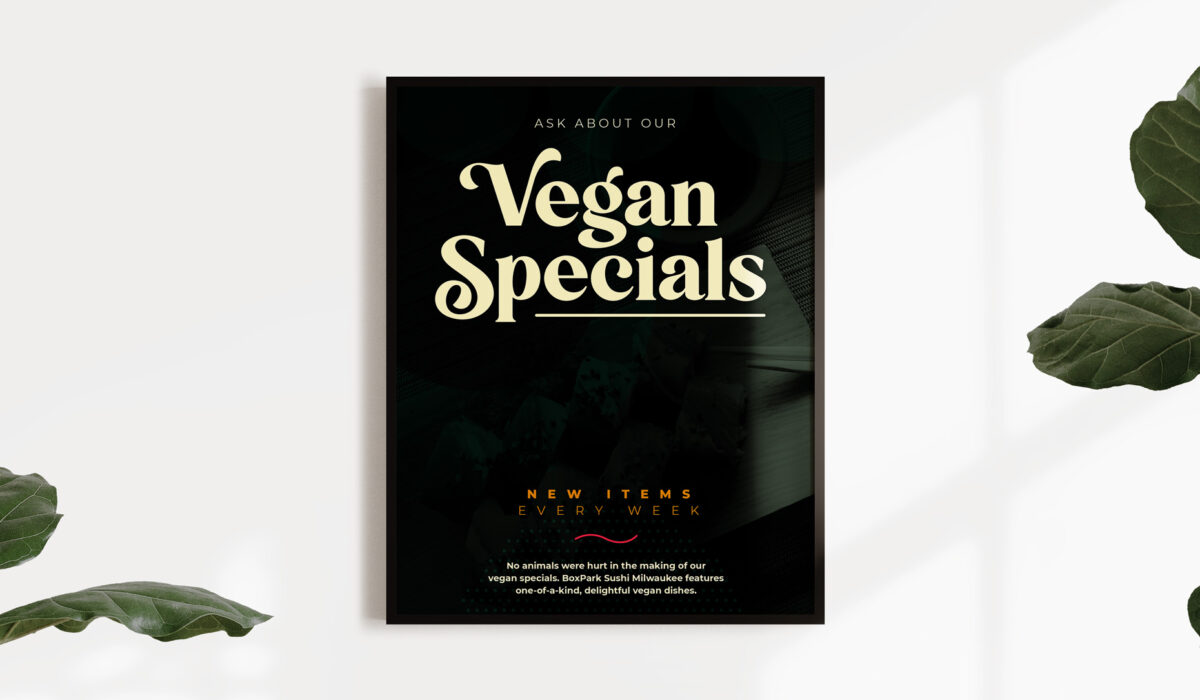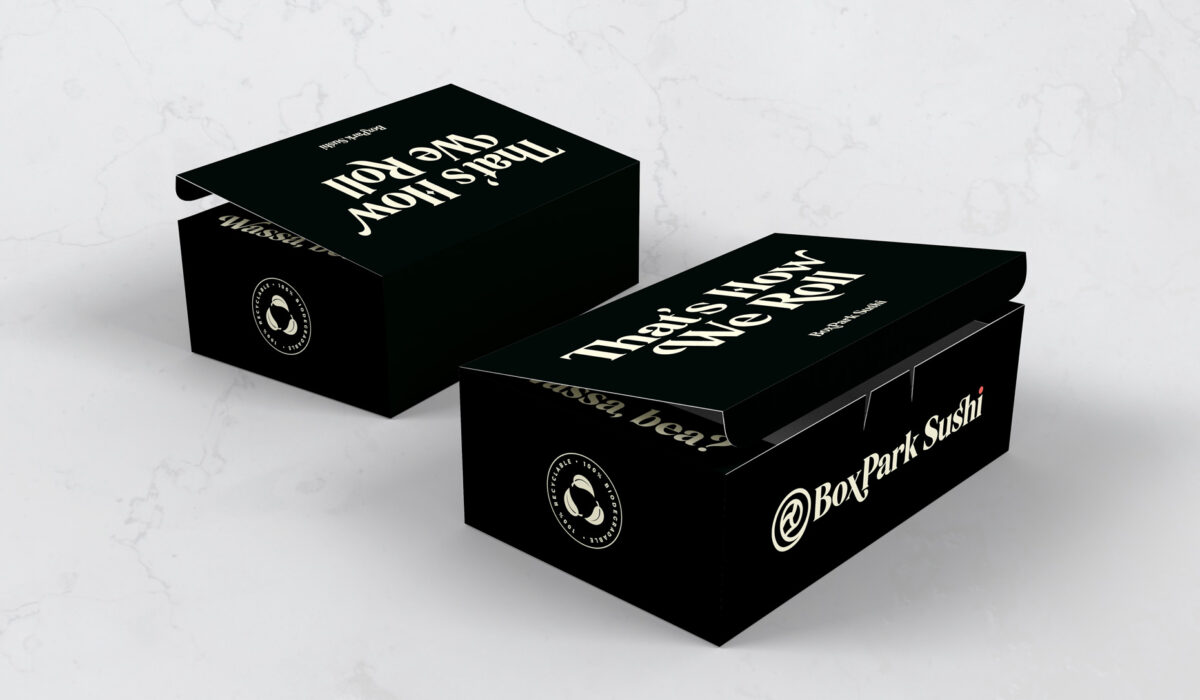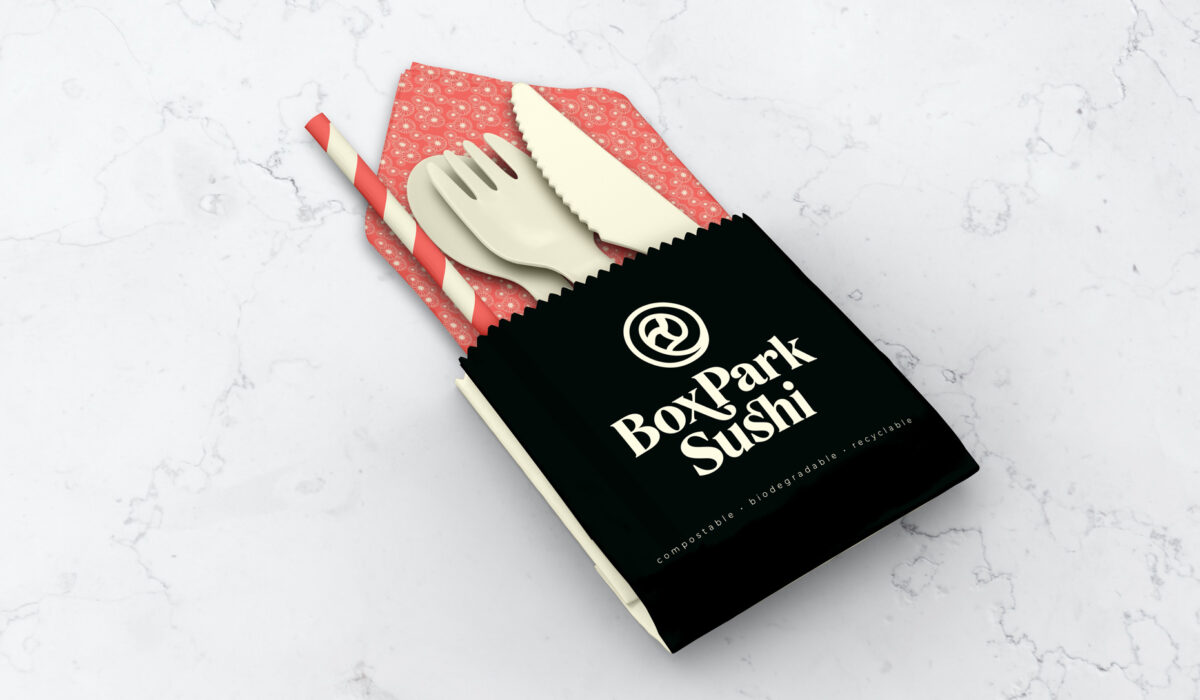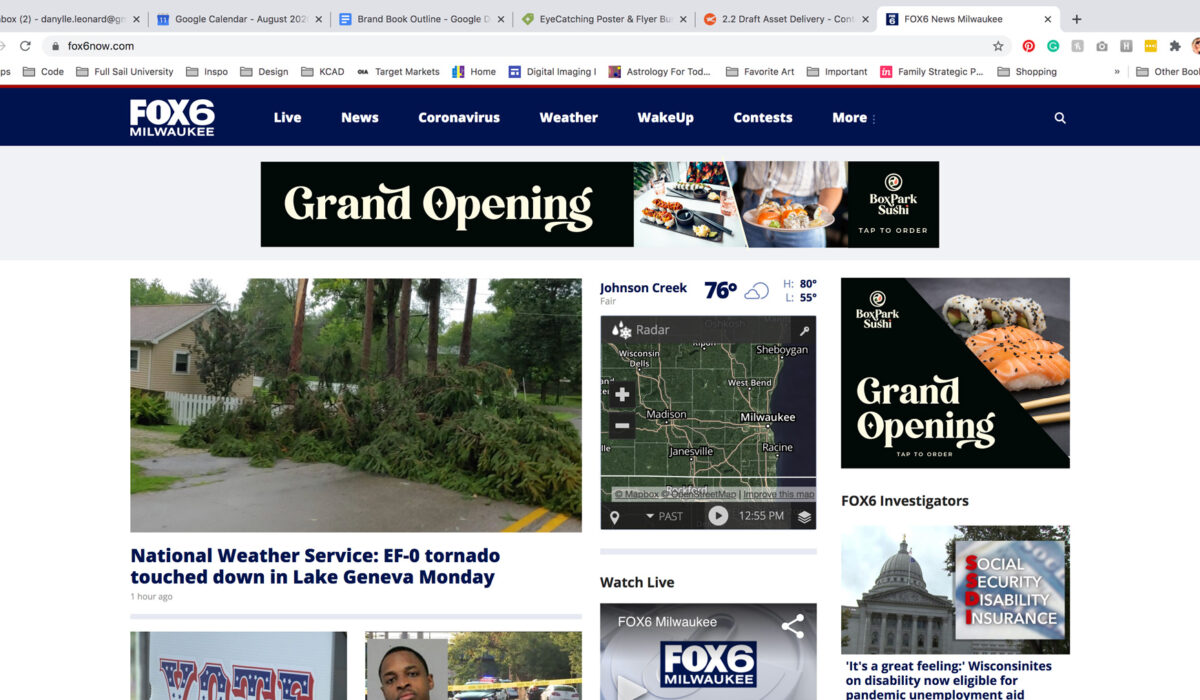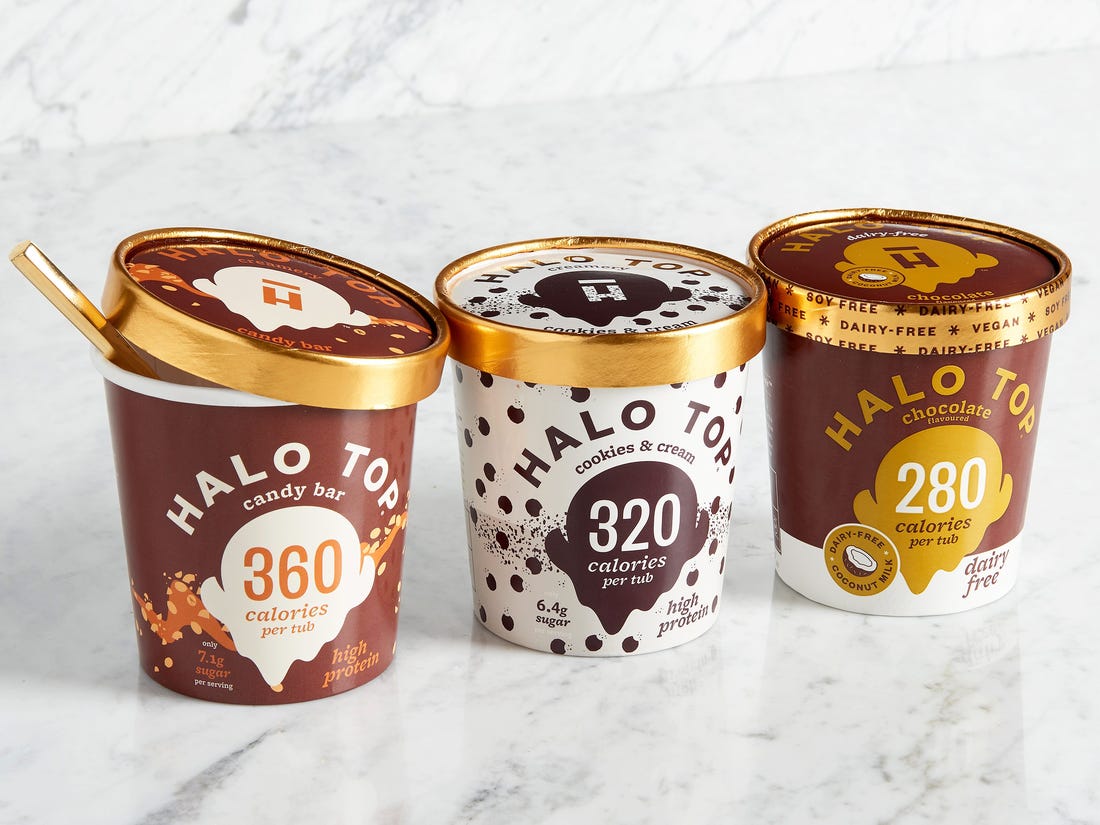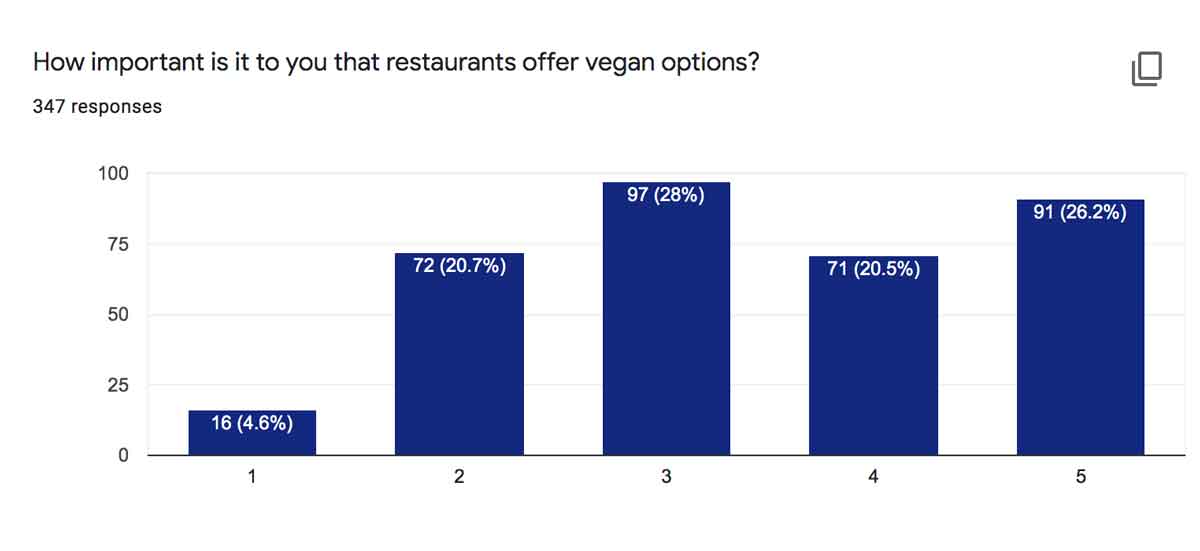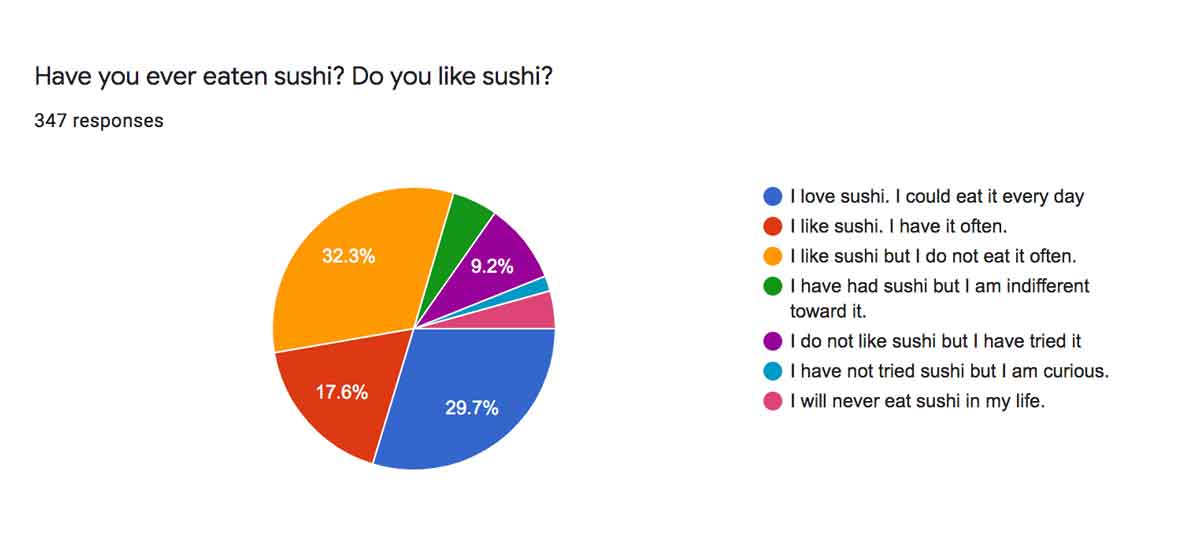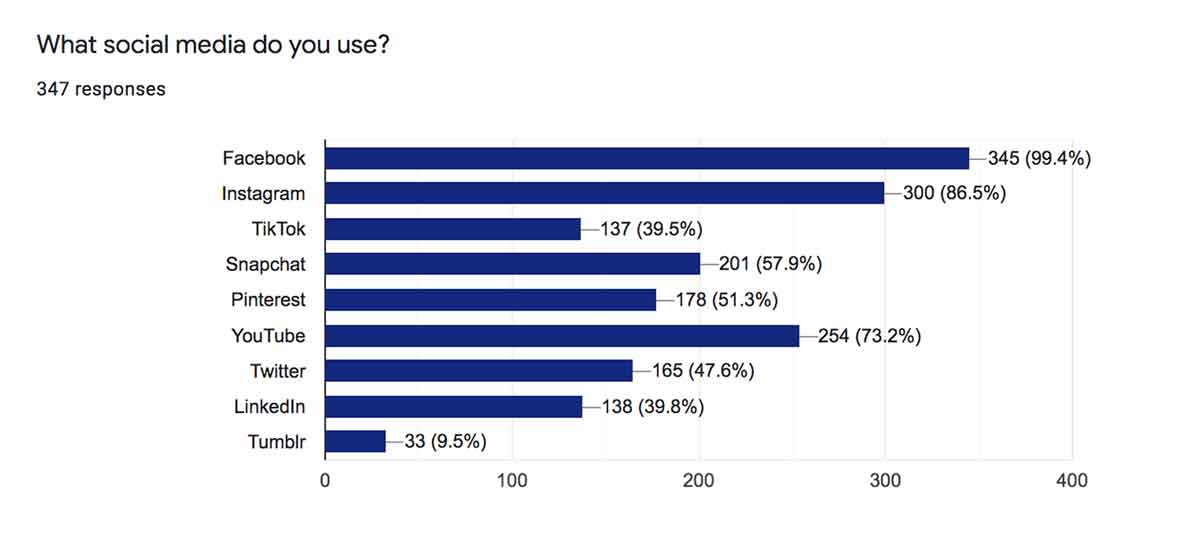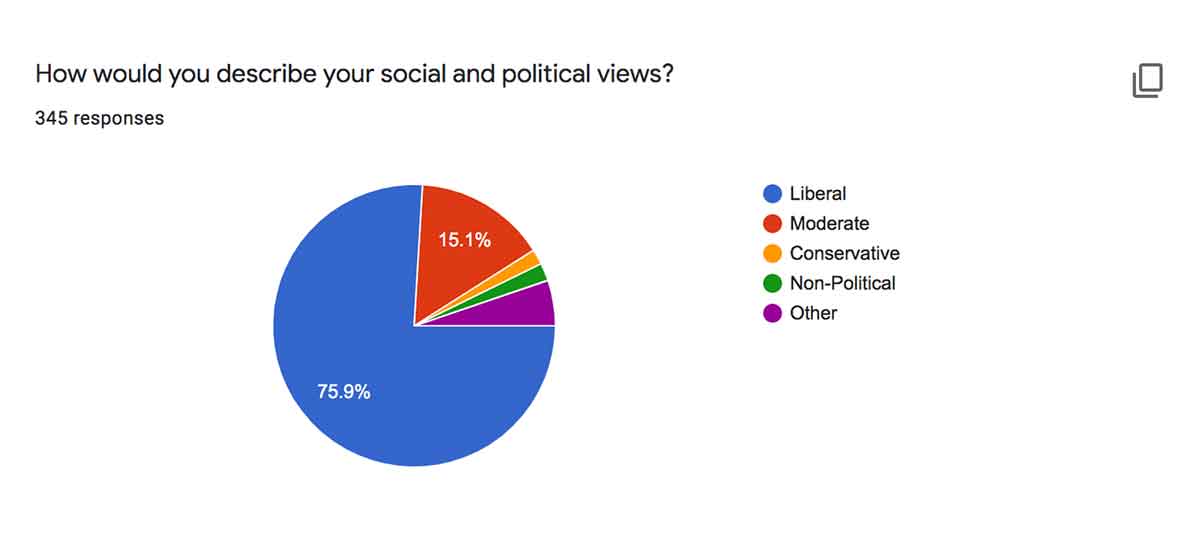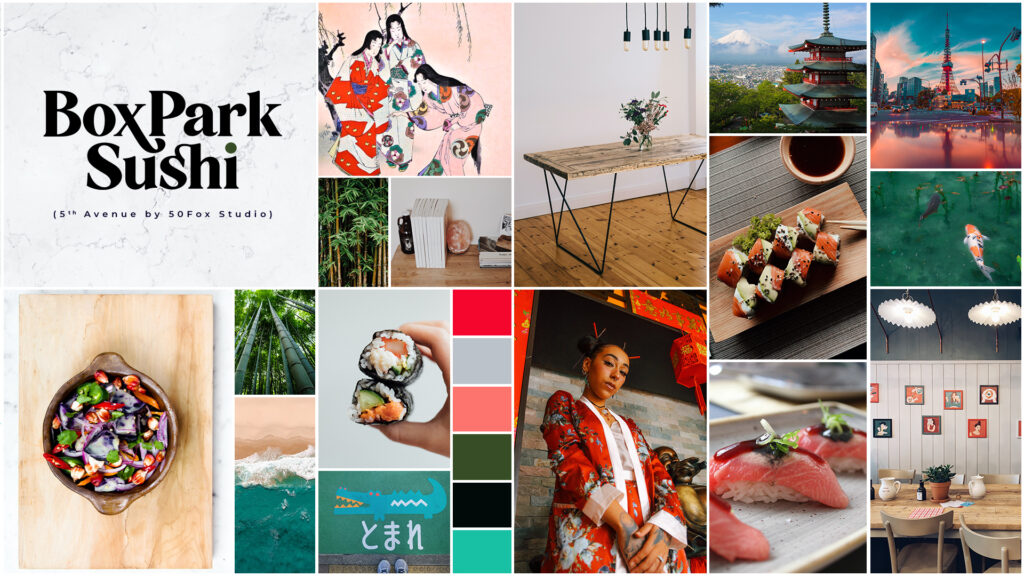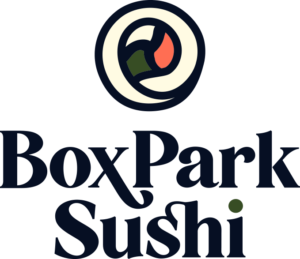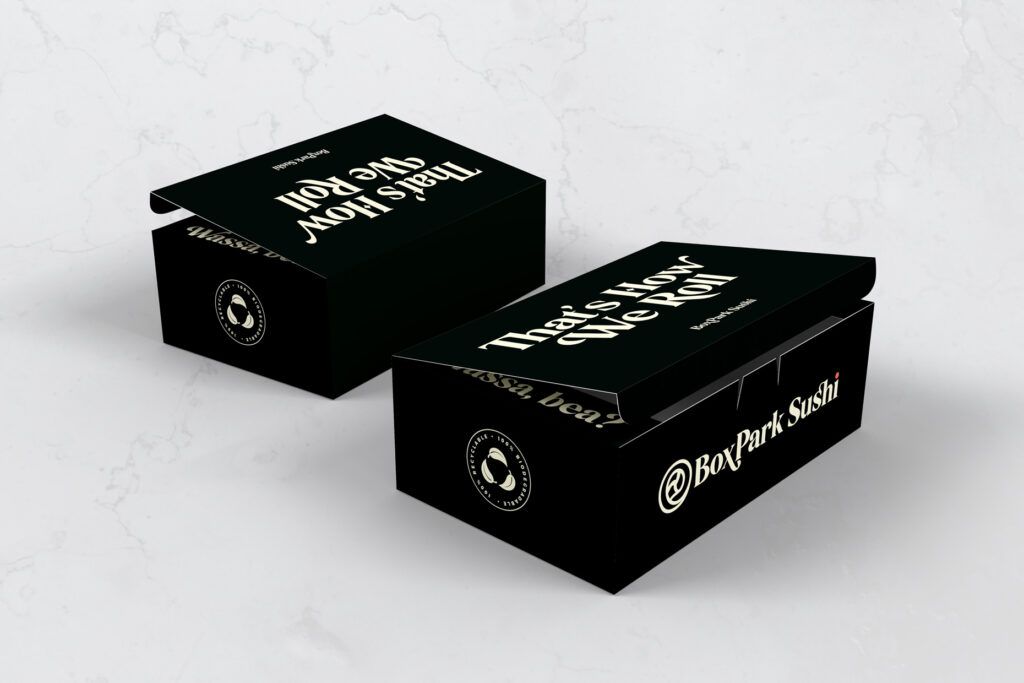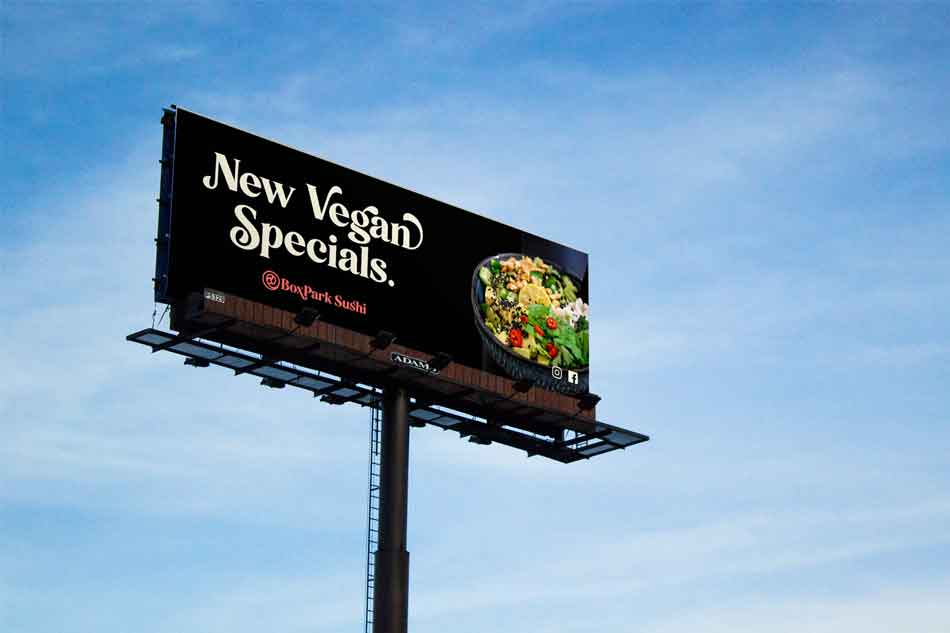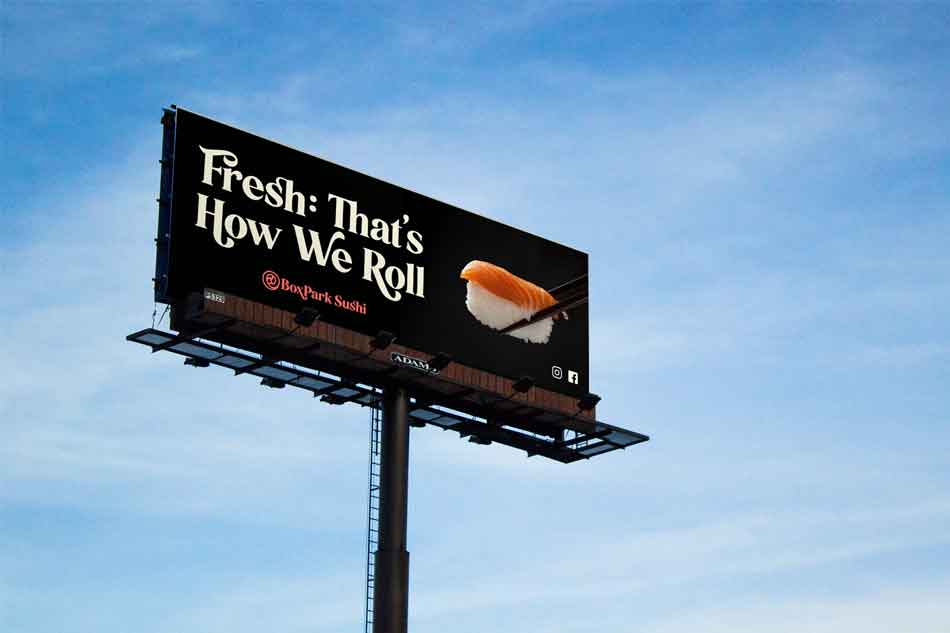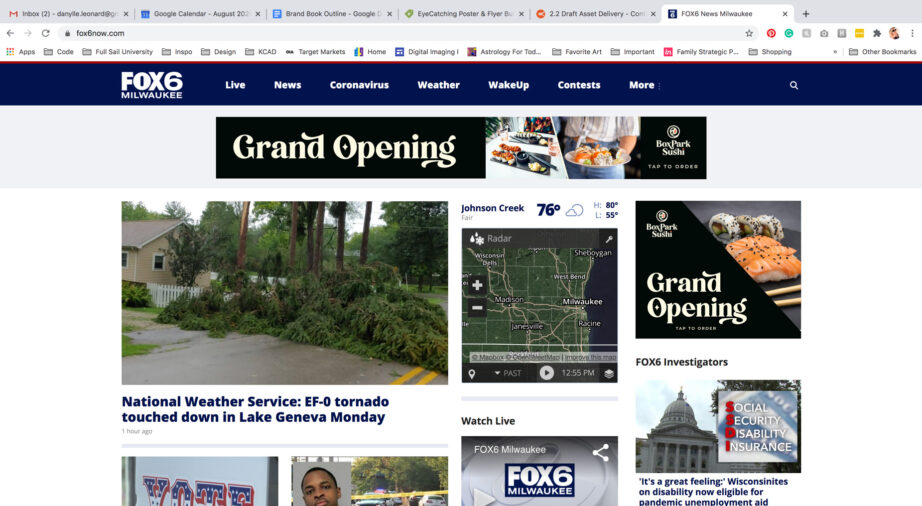Abstract
There was a time where brands could live separately from social issues. In a time of budding American progress, businesses could focus on their growth rather than their effects on the environment and society. As the world gets smaller and information is shared at the speed of light, the effects of free commerce can be seen in nearly all aspects of business and society. Digital natives are meeting adulthood. As upcoming generations become more educated, they are asking more from the businesses they patron. Research shows that Millennials are more likely to support a business that aligns with their social views. The pattern continues in their successors, Generation Z. As target markets beg businesses to conduct themselves morally and in the benefit of society, cultures, and the environment, businesses need to re-think what free enterprise should really mean.
Boxpark Sushi’s brand is woven with social and environmental issues. Despite your side of the aisle, there are some issues that affect every person on this Earth: climate change and the destruction of our natural world caused by free enterprise and irresponsible business practices. Secondly is the distribution of wealth which is becoming a hot issue. As money moves up in organizations, those who work for minimum wage are becoming poorer. They are a slave to the paycheck-to-paycheck lifestyle. Not only does this mean that the companies do not have happy, healthy workers, it is also a problem in society as a whole. The United States is facing an identity crisis. Society as a whole realizing their money talks louder than their votes and the real way to make a change is in commerce.
Businesses cannot exist in a vacuum. Society and commerce have a symbiotic relationship: people depend on businesses for income and general goods while businesses depend on people’s money. As society changes, they expect more from the businesses they patron. A large section of Millennials and Generation Z want their businesses to have responsible practices that produce less waste, create equality, source materials responsibly, and support people, not politics.
Project Overview
Social & Enviromental Issues + Target Market + Users Shopping List of Needs
BoxPark Sushi is a business located in East Milwaukee as a part of the pop-up mall experience, BoxPark. BoxPark Sushi has to compete with breweries in a city that loves beer. However, there are also a number of other sushi restaurants in the area which provide direct competition. BoxPark Sushi needed an all-over rebrand that would make them more attractive to the local sushi lovers than other sushi takeout places. Further complicating the re-brand is the volatile political environment and the coronavirus outbreak of 2020.
Project Goals
Research
Secondary + Primary + Survey Results
Milwaukee as a Target Market
Through research on Milwaukee’s demographics, it was found that there are two worlds to Milwaukee. First is the inner city, which is plagued with poverty. For someone to afford sushi regularly while living in Milwaukee, the researcher found that a household would need to be slightly above the poverty line to afford regular trips for eating out. Additionally, it was found that those in Milwaukee that live above the poverty line have some kind of college degree.
The second world of Milwaukee is the suburbs. People in the suburbs mostly work in the inner city. They also take day trips with their families (or household) to the inner city. In fact, it was found that the majority of tourism around the Great Lakes are local tourists taking day trips. Those who live in the suburbs around Milwaukee meet the income requirements for regular eating out. In fact, it is not uncommon for Americans to regularly eat out with colleagues or to grab something quick during workday breaks.
Understanding that those who will visit BoxPark Sushi the most where locals looking for a quick meal at lunchtime was key to beginning the frame of the target market. But these demographics do not explain how to compete as a sushi restaurant in a city that loves beer and breweries. So, this research led the researcher to the question of, “Who eats sushi?”
References
Cost of Living in Milwaukee (n.d.,) Payscale. https://www.payscale.com/cost-of-living-calculator/Wisconsin-Milwaukee
Council of the Great Lakes Region. (2016). First Time Assessment of Tourism Trends and Statistics Released for the Binational Great Lakes Region. Council of the Great Lakes Region. https://councilgreatlakesregion.org/first-time-assessment-of-tourism-trends-and-statistics-released-for-the-binational-great-lakes-region/
Milwaukee, Wisconsin Population. (2020). World Population Review. https://worldpopulationreview.com/us-cities/milwaukee-wi-population
United States Census. (2019). Quick Facts: Milwaukee County, Wisconsin. https://www.census.gov/quickfacts/milwaukeecountywisconsin
Design Thinking Based on Research
Once the target market was established (see Milwaukee as a Target Market), it was time to move into the design phase. Since laying out the target market, it is clear the brand needs to resonate with and speak to professional millennials living or working in the liberal haven city of Milwaukee. There are two sections of BoxPark Sushi’s design strategy based on what is known now: social, environmental and community good as well as designing for a millennial audience.
Research on Designing for Millennials
Fischer, M. (03032020). The Tyranny of Terrazzo Will the millennial aesthetic ever end? [online article]. The Cut. https://www.thecut.com/2020/03/will-the-millennial-aesthetic-ever-end.html
Madland, D. and Teixeira, R. (05 2019). New Progressive America: The Millennial Generation. Center for American Progress. https://www.americanprogress.org/wp-content/uploads/issues/2009/05/pdf/millennial_generation.pdf
Valle, R. D. (12162019). Not Junk Food, Yet Not Health Food – “Healthyish” is the latest trend in snack branding [online article]. AIGA Eye on Design. https://eyeondesign.aiga.org/not-junk-food-yet-not-health-food-new-healthyish-branding-reflects-the-way-we-eat-today/
Research on Designing for Millennials in Pictures

About the Survey
For BoxPark Sushi’s survey, I received responses from 350 people in nearly 5 different countries on 2 different continents. The participants were found using fan groups for cult favorites in the media that attract the same target market as that of BoxPark Sushi. One cult favorite, in particular, was “My Favorite Murder” podcasts’ “fan cult”. “My Favorite Murder” is a podcast created by Georgia Hardstark and Karen Kalgarrif in which they tell stories about horrible crimes while using humor to process the trauma. This podcast has launched a community whom call themselves, “murderinos”. This “fan cult” (as they are called) is mostly Millennial women who consider themselves liberal or progressive. The podcast, though a crime podcast, often shares progressive political views with their audience.
A Few of the Survey Questions + Findings
BoxPark Sushi’s Market Position
“By the time George Carlin had quipped that “Beer Nuts” was the official disease of Milwaukee, or Norm had been told by his bar buddy Cliff at Cheers that his breath smelled “like Milwaukee,” the reputation of this medium-sized Midwestern city had long been solidified,” writes journalist Todd Lazarski. Milwaukee, home to many world-renowned breweries, specifically loves their beer. Being that BoxPark Sushi does not serve beer, nor is sushi a particularly tempting food with beer, it was decided that BoxPark Sushi would be positioned as a lunch spot. BoxPark Sushi’s quick-serve, a-la-cart menu makes the restaurant perfect for a quick lunch on the go or a place to stop with co-workers to get a quick lunch before the next meeting.
Being that BoxPark Sushi has now positioned itself as a lunch place, the brand and interior need to be bright, light-hearted, colorful and uplifting. Additionally, Milwaukee has a wide variety of resturants to grab a quick (or not) lunch. “In the name of journalistic integrity, I have had to personally research tasty lunch spots in the greater downtown area. I was amazed by the variety,” explains Milwaukee journalist Laura Thompson. The fact that BoxPark Sushi is a lunch place also helps define the target market more. From what was already found about the Milwaukee market, it is known that to live above the poverty line in Milwaukee, a college degree helps. The target market for BoxPark Sushi is now Milwaukee professionals that work and/or live in the area.
References
Lazarski, T. (January 7, 2020). The 38 Essential Milwaukee Restaurants. Eater. https://www.eater.com/maps/best-restaurants-milwaukee-wisconsin
Thompson, L. (March 21, 2018). 20 Great Downtown Lunch Spots. Urban Milwaukee. https://urbanmilwaukee.com/2018/03/21/urban-guide-20-great-downtown-lunch-spots/
Case Studies
References
(June 21, 2014). The Worst Restaurant Social Media Disasters. Huffpost. https://www.huffpost.com/entry/the-worst-restaurant-soci_b_5603707?guccounter=1
Dunn, A. (June 30, 2020). Fact check: Chick-fil-A has not resumed donations to groups that oppose LGBTQ rights. USA Today. https://www.usatoday.com/story/news/factcheck/2020/06/30/fact-check-chick-fil-a-has-not-resumed-donations-groups-oppose-lgbtq-rights/3244765001/
References
(December 21, 2019). Salvation Army: Red Kettle Donations Down 50% Across Massachusetts. CBS Boston. https://boston.cbslocal.com/2019/12/21/salvation-army-red-kettle-donations-down-50-percent-massachusetts/
Arnold, C. (December 18, 2019). The Salvation Army is struggling with donations this holiday season. Why NY is no exception. https://www.democratandchronicle.com/story/news/politics/albany/2019/12/18/salvation-army-struggling-donations-why-ny-no-exception/2675317001/
BoxPark Sushi: Brand Spankin’ New
"Red is a powerful color in traditional Japanese society, representing strong emotions rather than ideas. As the color of the sun in Japanese culture and on the Japanese flag, red is the color of energy, vitality, heat, and power. Red also represents love and intimacy, including sexual desire and the life force and people's energy. For these cultural reasons, brides wearing red on their wedding day consider it a celebratory and strong color. Red envelopes with money in them are given on special occasions like weddings, baby births and New Year celebrations," writes Cassandra Mathers (2018, para. 3).
References:
Mathers, C. (June 25, 2018). What Is the Meaning of Color in Japanese Culture?. Synonym. https://classroom.synonym.com/what-is-the-meaning-of-color-in-japanese-culture-12081009.html
"Marketing colors like red can capture attention. The red color meaning is associated with excitement, passion, danger, energy, and action," writes Nicole Martins Ferreira. Red has been associated with many meanings throughout human history. Red was chosen as a brand color for BoxPark Sushi for the following reasons: 1. The significance of red in Japanese Culture, 2. The common appearance of red in traditional Japanese art, 3. It's attention-gaining qualities, and 4. the boldness of the color.
References:
Ferreira, N. M. (May 31, 2019).Color Psychology: How Color Meanings Affect Your Brand. Oberlo. https://www.oberlo.com/blog/color-psychology-color-meanings#:~:text=of%20Color%20Meanings-,Red%20Color%20Psychology,stand%20out%20on%20the%20shelf.
Color Name: Japanese Red
RGB: 244, 6, 45
CMYK: 0,100,88, 0
This brand color was inspired by fresh, uncooked salmon often found in favorite sushi dishes.
Though the color pink is often associated with femininity, the color was chosen for it's playfulness. Not only does this pink represent salmon, a common ingredient in sushi, pink is also a playful color that is not often used outside of feminine products.
References:
Ferreira, N. M. (May 31, 2019).Color Psychology: How Color Meanings Affect Your Brand. Oberlo. https://www.oberlo.com/blog/color-psychology-color-meanings#:~:text=of%20Color%20Meanings-,Red%20Color%20Psychology,stand%20out%20on%20the%20shelf.
Color Name: Salmon Pink
RGB: 252, 116, 109
CMYK: 0, 68, 50, 0
This brand color was pulled directly from the seaweed paper that holds sushi rolls together. However, green is a powerful color in Japanese culture where it represents nature, fertility snd growth. "As the color of nature, the Japanese word for green, midori, is also the word for vegetation. In addition, the color green represents youth and vitality, and the energy of growth," writes Cassandra Mathers
References:
Mathers, C. (June 25, 2018). What Is the Meaning of Color in Japanese Culture?. Synonym. https://classroom.synonym.com/what-is-the-meaning-of-color-in-japanese-culture-12081009.html
Green is a color that represents nature but more so, green has more psychological significance than nature. "Growth, fertility, health, and generosity are some of the positive color meanings for the color," explains Nicole Martins Ferreira (2019, para. 15).
References:
Ferreira, N. M. (May 31, 2019).Color Psychology: How Color Meanings Affect Your Brand. Oberlo. https://www.oberlo.com/blog/color-psychology-color-meanings#:~:text=of%20Color%20Meanings-,Red%20Color%20Psychology,stand%20out%20on%20the%20shelf.
Color Name: Seaweed
RGB: 55, 77, 37
CMYK: 73, 46, 96, 45
Being that Japan is an island, their culture is massively influenced by the ocean. Though blue was chosen for the brand to represent the ocean, Japanese culture has deeper meanings for the color. "Blue is also a color which represents purity and cleanliness in traditional Japanese culture, largely because of the vast stretches of blue water that surrounds the Japanese islands. As such, blue also represents calmness and stability," writes Cassandra Mathers.
References:
Mathers, C. (June 25, 2018). What Is the Meaning of Color in Japanese Culture?. Synonym. https://classroom.synonym.com/what-is-the-meaning-of-color-in-japanese-culture-12081009.html
"In color psychology, blue’s color meaning ties closely to the sea and the sky. Stability, harmony, peace, calm and trust are just some of the feelings your customer may feel about your brand when you integrate the color blue into your branding," explains Nicole Martins Ferreira. Being that BoxPark Sushi is a lunch spot, the vibe should be calm and serene. Blue is also the color of trust in branding. But more so, but was chosen as a brand color to represent the home of most sushi ingredients: the ocean. More specifically, this color represents the Sea of Japan.
References:
Ferreira, N. M. (May 31, 2019).Color Psychology: How Color Meanings Affect Your Brand. Oberlo. https://www.oberlo.com/blog/color-psychology-color-meanings#:~:text=of%20Color%20Meanings-,Red%20Color%20Psychology,stand%20out%20on%20the%20shelf.
Color Name: Sea of Japan
RGB: 24, 193, 164
CMYK: 71, 0, 47, 0
Though this color is not completely black, it holds the place of black. In actuality, the color is a very deep blue that represents the depths of the ocean and the darkness that is seen for fishing ships in the middle of the ocean. This deep, deep, dark blue represents the darkness at the depths of the ocean. "Black has also traditionally been a color of formality, and has increasingly come to represent elegance, with the growing popularity of Western conceptions of black-tie events," explains Cassandra Mathers (2018, para. 2).
References:
Mathers, C. (June 25, 2018). What Is the Meaning of Color in Japanese Culture?. Synonym. https://classroom.synonym.com/what-is-the-meaning-of-color-in-japanese-culture-12081009.html
Sophisicated brands often use black as a color. However, Black was too foreboding for BoxPark Sushi. Instead black was replaced with a very dark blue that could better fit the theme of the brand and the color palette. Blue is the color of trustworthiness as a brand color. But more so, black has dark meanings in Japanese culture and can be a polarizing color for brands.
References:
Ferreira, N. M. (May 31, 2019).Color Psychology: How Color Meanings Affect Your Brand. Oberlo. https://www.oberlo.com/blog/color-psychology-color-meanings#:~:text=of%20Color%20Meanings-,Red%20Color%20Psychology,stand%20out%20on%20the%20shelf.
Color Name: The Depths
RGB: 24, 193, 164
CMYK: 88, 79, 55, 72
"White has been an auspicious color in Japan for much of its history. White represents purity and cleanliness in traditional Japanese society, and is seen as a blessed color. Because of the sacred nature of the color, white is the color of weddings and other joyful life events, and appears on the Japanese flag," explains Cassandra Mathers (2018, para. 2). However, for the brand a warmer white was chosen. It nearly repsents a cream color. While avoiding the harshness of black, white was adjusted to better represent the brand. White can be a cold color, rather BoxPark Sushi is a warm and welcoming brand so warmness was added to the white.
References:
Mathers, C. (June 25, 2018). What Is the Meaning of Color in Japanese Culture?. Synonym. https://classroom.synonym.com/what-is-the-meaning-of-color-in-japanese-culture-12081009.html
"In color psychology, white showcases innocence, goodness, cleanliness, and humility. Keep in mind, that this is the meaning in North American culture. In some parts of the world, white has the opposite meaning. You’ll want to keep this in mind based on the target audience you serve. The color meaning for white also has a negative side where it symbolizes sterility and cold," writes Nicole Martins Ferreira.
References:
Ferreira, N. M. (May 31, 2019).Color Psychology: How Color Meanings Affect Your Brand. Oberlo. https://www.oberlo.com/blog/color-psychology-color-meanings#:~:text=of%20Color%20Meanings-,Red%20Color%20Psychology,stand%20out%20on%20the%20shelf.
Color Name: Warmest White
RGB: 255, 252, 228
CMYK: 0, 0, 11, 0
BoxPark Sushi: Media Plan
Why billboards?
There are two ways to get around Milwaukee. First is the public transportation systems. Secondly are the highways that bring people from the suburbs to their innercity destinations. Wisconsin’s Department of Transportations states that there was around 4,000,000 drivers in Wisconsin. The majority of their population being around Milwaukee. Billboards were chosen as a media outlet due to the constant, heavy travel on the highways that lead people from the suburbs into the city of Milwaukee. Additionally, many of those drivers are people with a task like getting to work.
Why bus stops?
There are two ways to get around Milwaukee. There is a complex system to highways bringing those from the suburbs into the inner city. However, public transportation is very important for those who live in the inner city. The city of Milwaukee predicted in 2008 that there are nearly 150,000 trips daily for public transportation in Milwaukee. The buses are exceptionally important for the college students living around Milwaukee. However, the bus stops are a generally great way to reach the general public in one place.
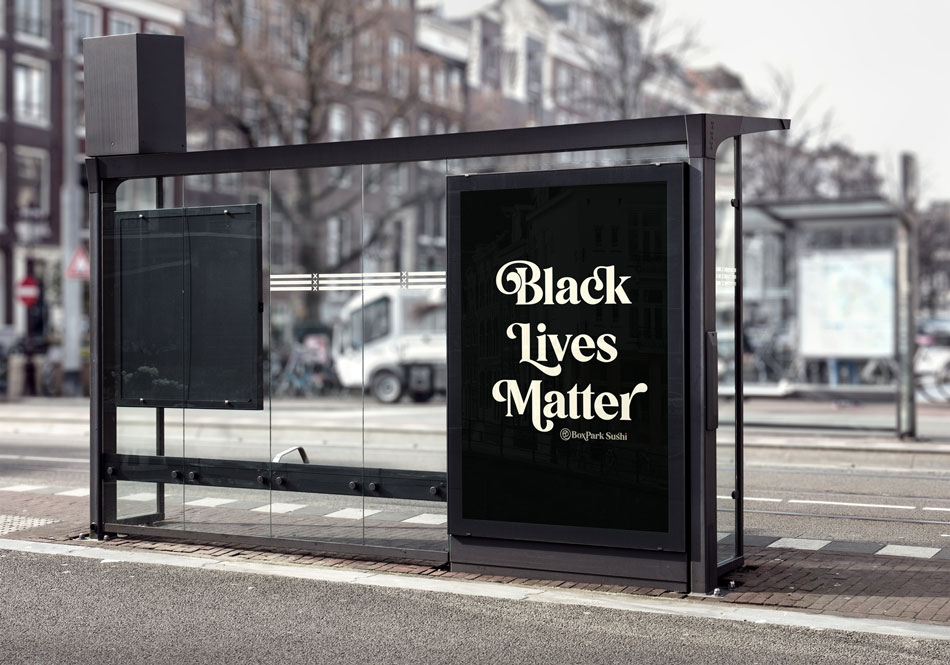
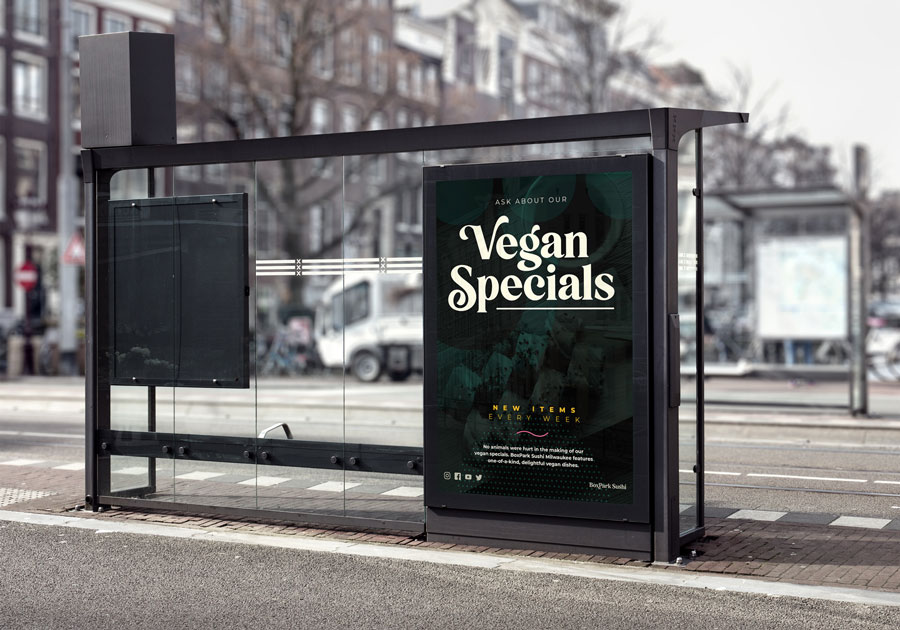
Why Table Tents?
Since table tents are inside the restaurant, they are used to reinforce the brand, promote new dishes and specials and upsell.
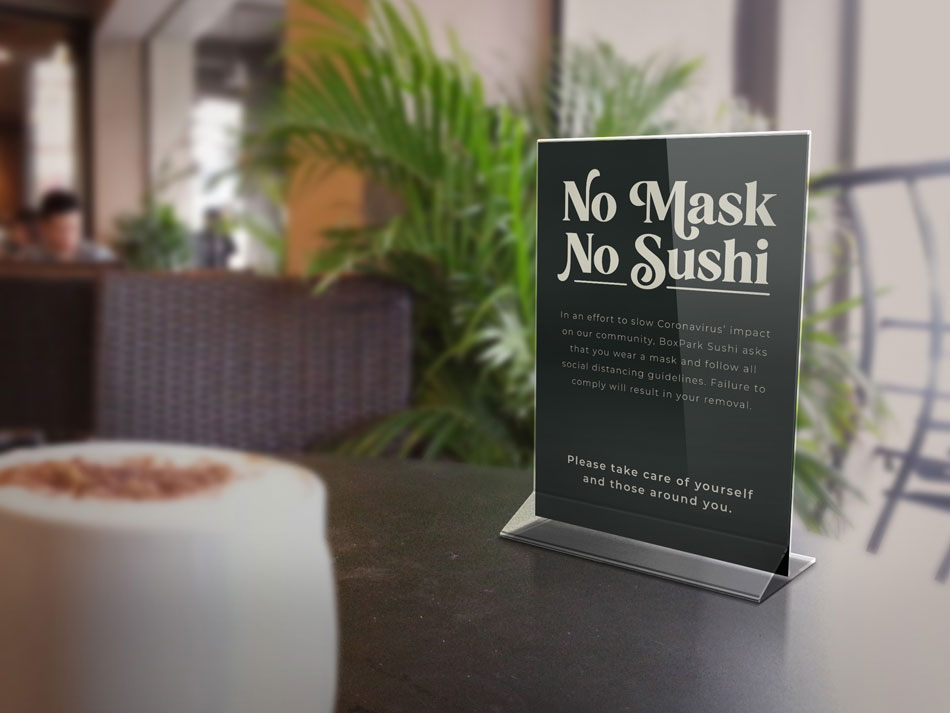

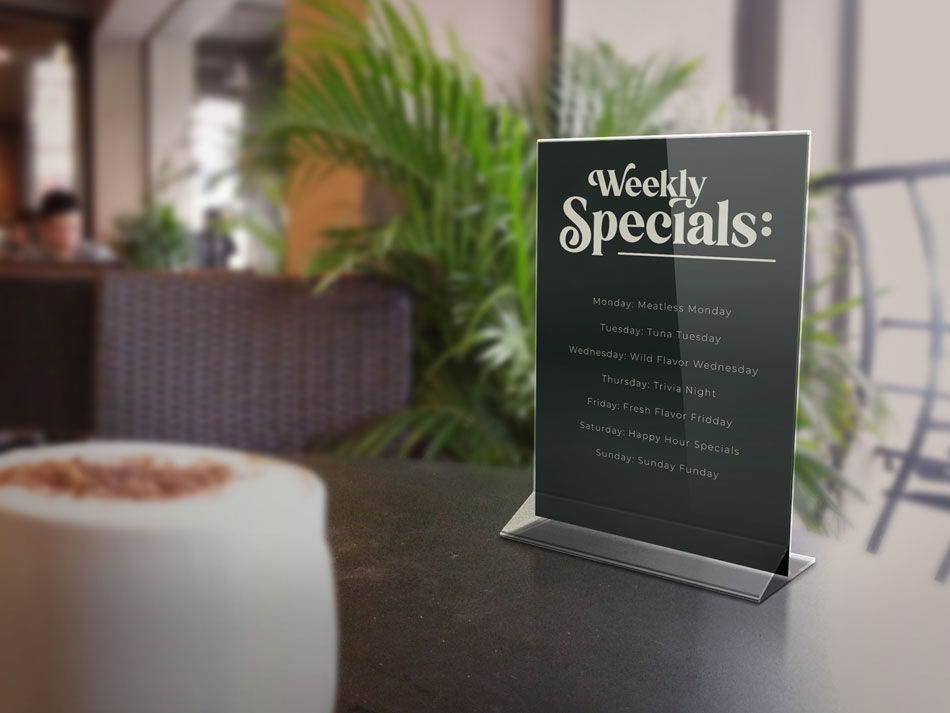
Why Digital Ads on Local News Sites?
Research showed that Millennials love their communities as much as avocado toast and brunch. Additionally, the majority of news today is obtained online. Being that BoxPark Sushi has a majorly local customer base, advertising will be placed on the two major local news websites in forms of digital ads and homepage takeovers.
Why Social Media?
Today social media is the pumping heart of brands. Never before have businesses had such direct access to their customer base, and vice versa. Social media is key in creating a brand army and staying in the front-of-mind of consumers. BoxPark Sushi’s social media plan includes favorites such as Instagram and Facebook.

References
Rippé, C. B. (2020). Engaging Generation Z and Helping Hurricane Victims with a Marketing Project. Marketing Education Review, 30(2), 82–88. https://doi-org.oclc.fullsail.edu/10.1080/10528008.2019.1646141
Pickard-Whitehead, G. (February 6, 2020). Millennials Still Using Facebook More Than Any Other Social Media Site [article]. Small Business Trends. https://smallbiztrends.com/2020/02/2020-consumer-culture-report.html#:~:text=It%20showed%20that%2077%25%20of,Report%2C%2070%25%20use%20daily.
Samara, T. (2017). Making and Breaking the Grid, Second Edition, Updated and Expanded: A Graphic Design Layout Workshop. United States: Rockport Publishers.
Savic, S. (June 27, 2016). 5 Secrets to Making a Winning Media Plan [Online Article]. Adweek. https://www.adweek.com/brand-marketing/5-secrets-making-winning-media-plan-172261/
Schwarz, H. (March 23, 2020). How Bernie Sanders Built a New Visual Language for Democratic Socialism [Online Article]. AIGA Eye on Design. https://eyeondesign.aiga.org/how-bernie-sanders-built-a-new-language-for-democratic-socialism/
United States Census. (2019). Quick Facts: Milwaukee County, Wisconsin. https://www.census.gov/quickfacts/milwaukeecountywisconsin
Valle, R. D. (December 16, 2019). Not Junk Food, Yet Not Health Food - “Healthyish” is the latest trend in snack branding [online article]. AIGA Eye on Design. https://eyeondesign.aiga.org/not-junk-food-yet-not-health-food-new-healthyish-branding-reflects-the-way-we-eat-today/
Voorveld, H. M., & van der Goot, M. (2013). Age Differences in Media Multitasking: A Diary Study. Journal of Broadcasting & Electronic Media, 57(3), 392–408. https://doi-org.oclc.fullsail.edu/10.1080/08838151.2013.816709
Wachtel, T. (December 10, 2018). What to Include in Your Brand Guidelines [Walkthrough]. Element Three. https://elementthree.com/blog/brand-guidelines-walkthrough/
